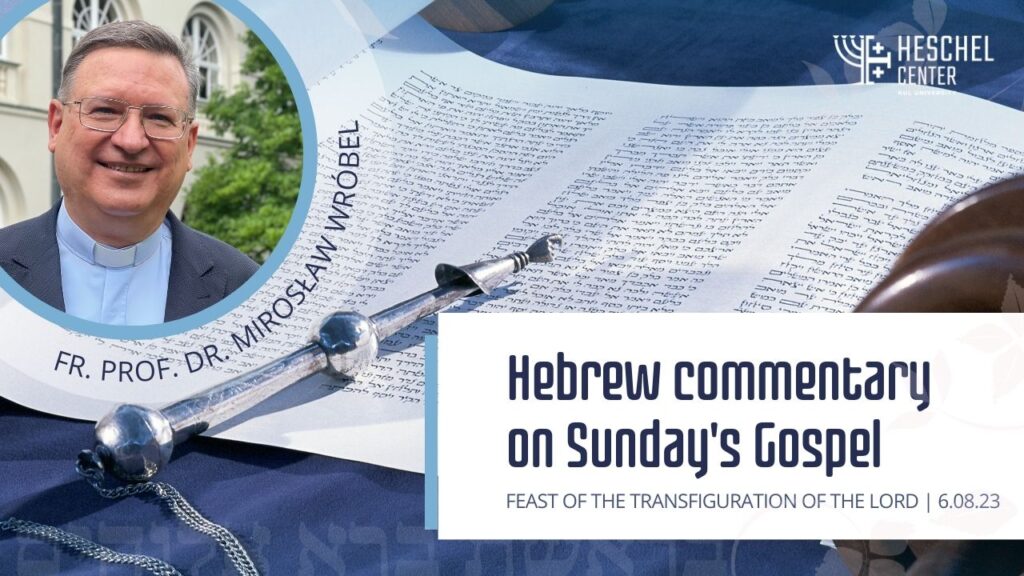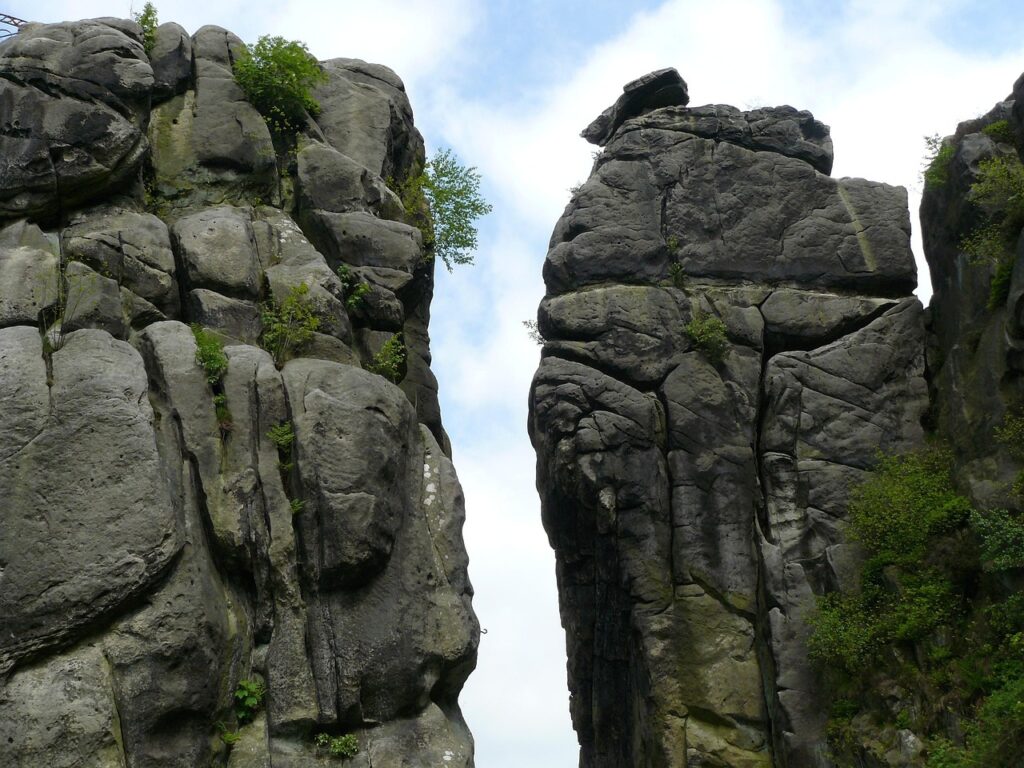The mountain of transfiguration – a place of my being with God
A mountain in the Hebrew Bible is a place of prayer and special communion with God. As the new Moses, Jesus ascends the mountain with his disciples to experience God’s presence and reveal his messianic glory. “The more a person discovers God and listens to Him, the more they will experience God’s power in his […]

A mountain in the Hebrew Bible is a place of prayer and special communion with God. As the new Moses, Jesus ascends the mountain with his disciples to experience God’s presence and reveal his messianic glory. “The more a person discovers God and listens to Him, the more they will experience God’s power in his life,” writes the Representative of the Rector of the Catholic University of Lublin for Catholic-Jewish Relations and Research in the Holy Land, Fr. Prof. Dr. Mirosław Wróbel, in a commentary for the Heschel Centre of the Catholic University of Lublin for Sunday, August 6.
Origen, followed by Cyril of Jerusalem, Epiphanius and Jerome, located the transfiguration of Jesus on Mount Tabor (588 m), a place situated only 8 km away from Nazareth, Jesus’ hometown. It is there that Jesus reveals his messianic glory to his disciples.
The voice of God, Fr. Wróbel emphasises, which the disciples heard during this event, clearly corresponds to the words referred to the suffering Servant of the Lord in the Book of Isaiah. Even today, “this voice aspires to resound with all its power, revealing the truth about God, the world and man. The more people gaze at and listens to the ‘chosen Son of God’, the more they will experience the power of God in their lives and the more they will discover the wisdom of God,” stresses Fr. Wróbel.
One thing about climbing mountains is that eventually you have to come down. Christ also came down from Mount Tabor with his disciples, even though the disciples wanted to stay there and pitch their tents. “Together with the Apostles and with Jesus, however, one has to descend into the valleys of life, where one again and again has to walk a path where one is sometimes weary, weak, lonely, struggling with evil and in a hurry. On this path, however, there is Jesus, who never leaves us alone” – writes Fr. Mirosław Wróbel.
The full text of the commentary follows:
Today’s verses of the Gospel describe the transfiguration of Jesus in front of his closest disciples on a high mountain. The text does not explicitly name the mountain, but early Christian tradition from around 200 AD, attested by Origen and later by Cyril of Jerusalem, Epiphanius and Jerome, situates the event on Mount Tabor (588 m). Mount Tabor is a mere 8 km from Nazareth, so Jesus in his childhood could have looked at it every day from the hills of his hometown.
A mountain in the Hebrew Bible is a place of prayer and special communion with God. According to Exodus 24:9-11, Moses and the elders of Israel ascended Mount Sinai to experience the presence of God. As the new Moses, Jesus ascends the mountain with his disciples to experience the presence of God and to reveal his messianic glory. Jesus is accompanied at the moment of transfiguration by two great Old Testament figures, Moses and Elijah. Moses may represent the Law of the Old Testament Law while Elijah represents the Old Testament Prophets. The deaths of both of them occur in unexplained circumstances. The two are witnesses to a new life beyond the threshold of death.
The state of glory and contemplation of God’s mysteries is so delightful for the disciples that Peter, noticing the departure of Moses and Elijah, wishes to stop time. In this way, the disciples wish to prolong the uniqueness of the heavenly experience. Their state of mind is voiced in the words: “Lord, it is good that we are here”. A person finding God and returning to fellowship with Him has a sense of coming home and being at home. Peter proposes putting up three tents for Jesus, Moses and Elijah. On the mount of transfiguration, Jesus himself appears as the Tent of Encounter between God and humanity. Everyone listening to Jesus and contemplating His face is invited to embark with Him on the journey to Jerusalem which, through the cross, leads to the splendour of the resurrection.
The words of God spoken in the cloud correspond with the words referred to the suffering Servant of the Lord in the Book of Isaiah: “Here is my servant whom I uphold, my chosen one with whom I am pleased. Upon him I have put my spirit; he shall bring forth justice to the nations” (Is 42:1). The voice of God resounding in the cloud seeks the face of each one of us. This encounter is only possible through our adherence to Jesus, who has become the Word of God for people of all eras, nations, cultures, and religions. This voice aspires to resound with all its power, revealing the truth about God, the world and man. The more people gaze at and listens to the “chosen Son of God”, the more they will experience the power of God in their lives and the more they will discover the wisdom of God, namely that, like Christ, we are called to attain the true glory through the cross.
The Mount of Transfiguration is the mountain of man’s encounter with God. On this mountain, God shows the glorious face of Jesus. Listening to Jesus enables the disciples to see the fullness of God’s gift. In the splendour of the Mount of Transfiguration, life finds its full meaning. A person experiencing the splendour of the Mount of Transfiguration feels at home and can cry out after St Peter: “Lord, it is good that we are here”. Together with the Apostles and with Jesus, however, one has to descend into the valleys of life, where one again and again has to walk a path where one is sometimes weary, weak, lonely, struggling with evil and in a hurry. However, Jesus walks this path with us and never leaves us alone. In the mystery of transformation, I am able to experience the power of God working in my weakness and frailty. In this mystery, I can fully understand God’s voice calling out to me with great love: “his is my beloved Son, with whom I am well pleased; listen to him”.
About the Author
Fr. Prof. Dr. Hab. Mirosław Wróbel, head of the Biblical Sciences Section, head of the Chair of Biblical Philology and Inter-Testament Literature at the Institute of Biblical Sciences, Faculty of Theology, John Paul II Catholic University of Lublin, head of the Biblical Formation Course, director and science editor of the Aramaic Bible project, Representative of Rector of the Catholic University of Lublin for Catholic-Jewish Relations and Research in the Holy Land, first Director of the Abraham J. Heschel Centre for Catholic-Jewish Relations at the Catholic University of Lublin.
Heschel Centre for Catholic-Jewish Relations at the Catholic University of Lublin
Related

The Spirit led him through the desert, while he was tempted: Fr. Jorge Miró
Jorge Miró
09 March, 2025
3 min

Reflection by Monsignor Enrique Díaz: Temptations
Enrique Díaz
08 March, 2025
6 min

Every tree is known by its fruit: Commentary by Fr. Jorge Miró
Jorge Miró
01 March, 2025
3 min

Reflection by Monsignor Enrique Díaz: Seeking guides
Enrique Díaz
01 March, 2025
6 min
 (EN)
(EN)
 (ES)
(ES)
 (IT)
(IT)

